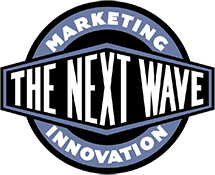Insights
A Creative Solution for Disney Parks and Covid19
 Disney has closed their theme parks because of Covid19 and the difficulties of social distancing in a space where people are supposed to get together. Coronavirus isn’t going to go away tomorrow, so what is the answer to opening the parks back up- and making it a magical experience? Does Disney already own the answer?
Disney has closed their theme parks because of Covid19 and the difficulties of social distancing in a space where people are supposed to get together. Coronavirus isn’t going to go away tomorrow, so what is the answer to opening the parks back up- and making it a magical experience? Does Disney already own the answer?
What does a Stormtrooper and a drone have to do with making the park safe? Well, we’ll share.
Suppose Disney makes real Stormtrooper helmets, that allow you to breathe highly filtered air on your visit? And suppose, we gamify your experience, by building in the same obstacle avoidance system that drones use to keep them from crashing? Every visitor would become a stormtrooper, complete with helmet and gauntlet gloves. Each helmet would be programmed to allow you to be within 6 feet of your family, but, no one else. An audible will go off when you are too close to others. You’ll be given a score that reads in your heads-up display in your visor on how you’re doing. The less contacts, the more rides, the higher the visitors score. The gauntlet gloves- when you make a push sign toward others- will send a signal to others helmets- and increase your score as well as warning them to stand back. People who don’t obey distancing, would eventually be told to return to base for retraining.
Would it be expensive to build the hundred thousand helmets and the gamification systems, sure, but, everyday the parks are closed is costing tens of millions. Estimates of the costs of the closures come in at half a billion. And that’s not including the rest of the tourism ecosystem of hotels, airfare, tourism.
Disney is full of imagineers, they’ve made money with creativity for years. Why not make the parks a true, full time, immersive experience?
And the best part? Who didn’t want to be a stormtrooper, at least once?
How Costco could use customer data to save lives
There is a reason companies involved in retail food distribution are paying their employees a premium during the Coronavirus Crisis, workers are risking death to come to work. And while the idea of strolling through the aisles and shopping as if nothing has changed may be reassuring to many, with every touch of a freezer door handle, checkout register, or close contact with a cashier, the risk of transmission rises. This is not how to do business in a pandemic, especially if you are sitting on every customers complete buying history through your database.
Costco has already seen the mad effect of hording, and has limited purchases of items in high demand. But, this still doesn’t solve the human interactions involved in processing these sales using their conventional sales processes. And, setting certain hours aside for seniors is nice, but, not protecting your employees anymore than normal.
This is a new normal, and the solution is simple: Build a list of every customers historic purchases based on frequency of purchase over the last 3 years. Create a pick list, with items purchased most often at the top. Send a pre-built cart to the customer via their customer ID- allow them to place an order, and have it picked, waiting for pickup outside the store at a designated time. Set the limits based on historic purchases- ie: I buy 18 rolls of Kirkland toilet paper every 8 weeks. The same would go for the new reality.
The non-grocery purchases, from toaster ovens to TV’s would still be available via the same cart- without restriction other than inventory constraints. And while there are some items that Costco may stock that I may need that are in high demand, but, I’ve not bought before, like a thermometer or hydrogen peroxide, these would be managed like any other inventory item, as needed, after the people who’ve historically bought it regularly have had first dibs.
While this system is being built for the Coronavirus crisis, it may become the new norm, especially as more people learn to plan more, shop less and realize that time is still a precious commodity.
As to the additional cost of having employees pick and fill orders, add a per order surcharge based on the size of the order. Trust me, customers will be willing to pay, and employees will feel a lot safer not having to interact with as many customers and risk contamination.
While this isn’t possible for most smaller businesses who don’t have the customer data, or the technology behind it, if there is anything this crisis will teach companies- it’s the value of a seasoned employee, who knows your business and how it operates. The costs of training, the costs of hiring, will become incredibly clear for those who lose parts of their workforce due to the pandemic.
A FREE Ad School
Free is the most powerful word in advertising. Knowing good advertising from bad advertising is the most important skill in advertising. Because we can’t expect all of our clients to go to some expensive ad school and learn what works and what doesn’t, we thought we’d provide a free education for them, and also for the budding young professionals who we hope to employ some day.
This is the introduction. We released the first three episodes all at once, so once you finish this one, on to the next at the tail of the video.
If you enjoy it, please subscribe to the youtube channel. And, consider leaving some comments or questions below.
We’d love to know if you want some other materials to go along with each episode.
Bloomberg buys Superbowl :60 other candidates should learn from it
The New York Times reports that Michael Bloomberg is buying a :60 in the Superbowl to attack Trump, spending north of $10M. Trump may buy a :30. For some reason, politicians seem to shy away from the Superbowl:
But the Super Bowl ad is a show of financial force rarely seen in presidential politics. Though some campaigns have made local advertising buys during past Super Bowls, a national buy has often been out of reach, given the expense. It is also usually viewed as wasteful to pay to reach a 50-state audience rather than buying ads in the swing states where campaigns would prefer to target their message.
Source: Bloomberg Takes On Trump With a $10 Million Super Bowl Ad - The New York Times
But, here’s the reality, there is no better ad buy any national candidate could make. Here’s why:
- It’s early, and first movers advantage applies. This sends a “Go big or go home” message to the rest of the field.
- It reaches like no other ad buy. It’s the only place an ad buy can guarantee not only an audience, but a discussion the day after.
- Contrary to Google and Facebook’s claims of being able to reach everyone that matters, there are still people offline, and even if you are online, it’s impossible to hit everyone at once with the same message to start buzz.
- Thanks to Youtube and social sharing, the conversation can continue a long-time after the running of the single ad. People still talk about Apple’s 1984 which only ran officially once, during the Superbowl.
- Because he’s the only challenger buying a spot (as far as we know) he’ll own the political discussion after the game.
- He’s missed the debate stage. This clearly puts him in the mix.
- Smart tracking of visitors to his site after the spot, should give him a huge base to remarket to.
The real question is who is doing the creative and while attacking Trump for :60 the real goal is to move people to back Bloomberg. Since he’s the only candidate not asking for money, how does he measure the conversions he’s getting for his money? Most American’s don’t donate, most don’t volunteer to work on campaigns. For a big data guy, you’d expect something more than just eyeballs and shares.
The other campaigns will all spend $10M on media. They’ll make Alphabet and Facebook money. They will only target voters in swing states and have custom messaging and all kinds of other tactical goals. The reality is, Bloomberg will have set off an atomic bomb of a message, and the rest will forever be looking at the shadow caused by the blast.
Your thoughts? Please leave in comments.
